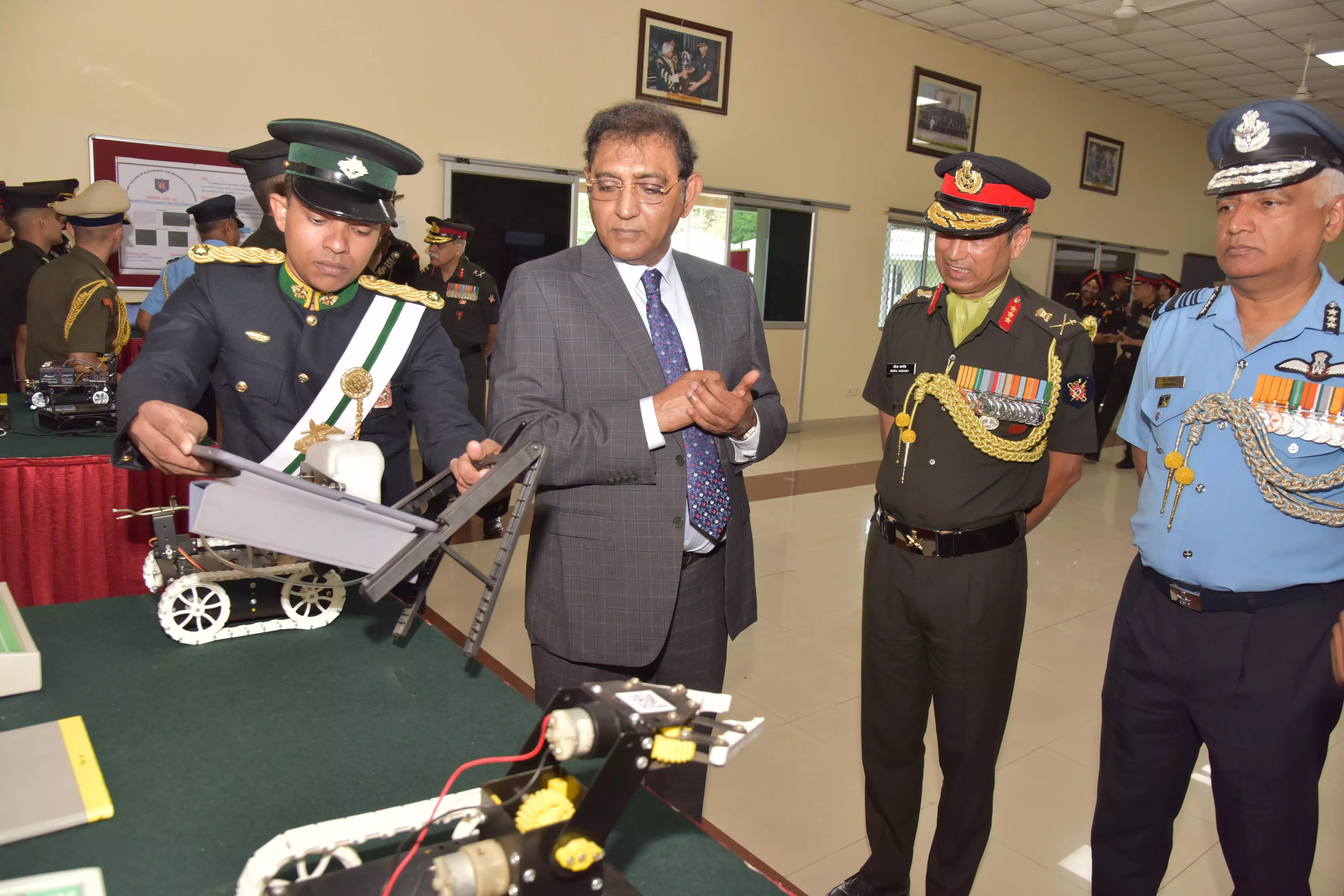SOURCE: AFI


The 105th convocation ceremony at the Military College of Electronics and Mechanical Engineering (MCEME) on Saturday showcased India’s commitment to integrating cutting-edge technology into its armed forces. The event offered visitors a glimpse into several homegrown innovations designed to maximize the military’s operational capabilities.
Among the notable technologies on display were the virtual reality-based combat medical care (VR CMC), an augmented reality (AR)-based advanced mannequin system, an autonomous reconnaissance and battlefield surveillance drone, and a voice-controlled robot capable of offline operation.
irtual Reality-Based Combat Medical Care (VR CMC)
Developed by the Army’s Simulator Development Division (SDD), the VR CMC aims to train medical officers in human anatomy and physiology under realistic, high-stress war scenarios where medical facilities are minimal. This innovation immerses trainees in virtual environments, reducing the need for practice on cadavers or actual injured persons.
“VR CMC provides a highly immersive training experience, preparing medical officers for the harsh realities of battlefield medicine,” an officer from the SDD explained. The realistic training environment helps reduce dependency on live tissues, providing a safer and more ethical approach to medical training.
Augmented Reality-Based Advanced Mannequin System
The AR-based advanced mannequin system features a life-size mannequin fitted with sensors and actuators that react according to simulated health conditions. This system allows trainees to make and learn from mistakes without posing any risk to real patients.
“While VR immerses the trainee completely in a simulated environment, AR allows them to interact with both the virtual and real worlds simultaneously,” said an officer from the SDD. This dual capability enhances the realism and effectiveness of medical training.
Voice-Controlled Robot
One of the standout projects submitted by four officers from the graduating class was a voice-controlled robot equipped with a camera for live video transmission over a distance of 500-600 meters. The robot operates on radio frequency transmission, which reduces the risk of interception, and can function without an internet connection, making it suitable for use in remote locations.
“Radio frequency transmission provides a secure and reliable communication method, and the robot’s offline capabilities are particularly useful in areas with poor connectivity,” explained Lt Harshit Dwivedi, an officer involved in the project.
Autonomous Reconnaissance and Battlefield Surveillance Drone
The autonomous reconnaissance and battlefield surveillance drone, another highlight of the convocation, offers significant potential for future enhancements, such as night-time operations. “The drone’s current capabilities are impressive, but there is room for further improvements to enhance its effectiveness in various conditions,” said Subedar Sandeep Kumar, who worked on the project.
AK Chaturvedi, Commandant of SDD, expressed pride in the innovations, noting that while these technologies were developed for defense purposes, they have potential applications in civilian equipment as well. “The SDD has 16 VR innovations to its credit. Even IITs cannot claim that,” he said, emphasizing the division’s pioneering role in technological advancements.